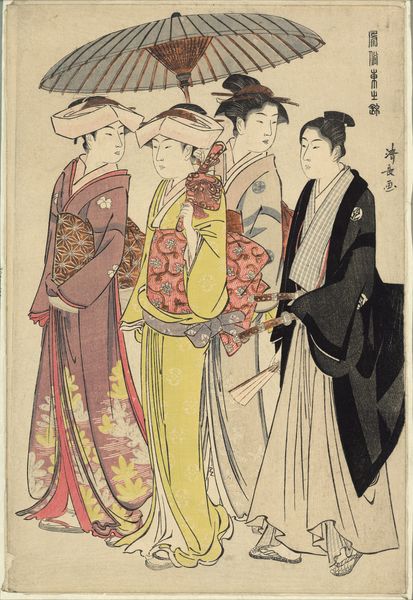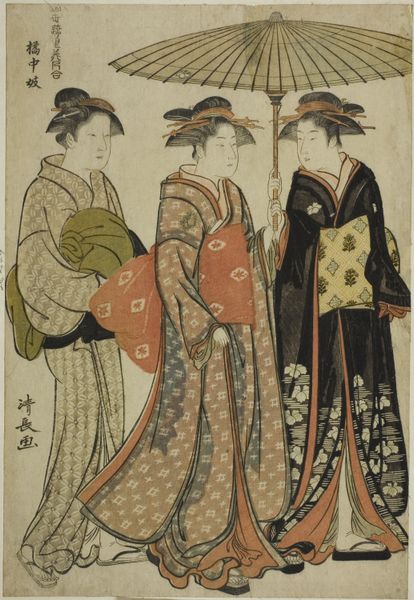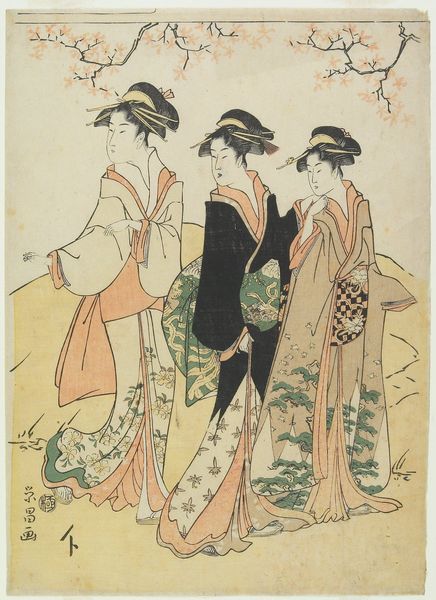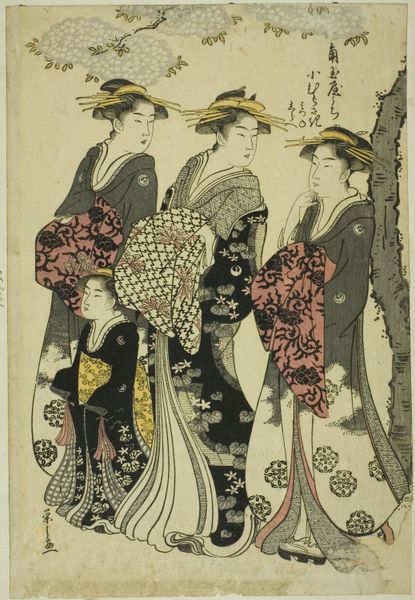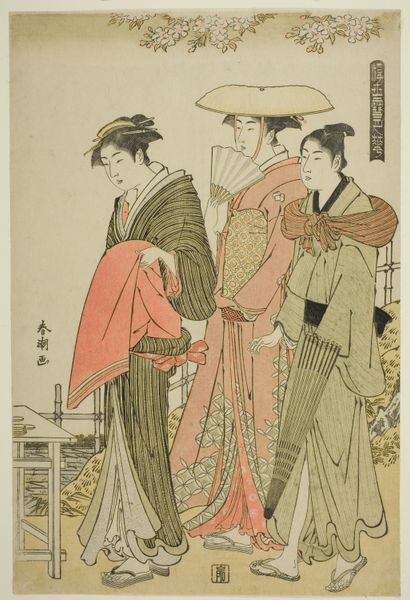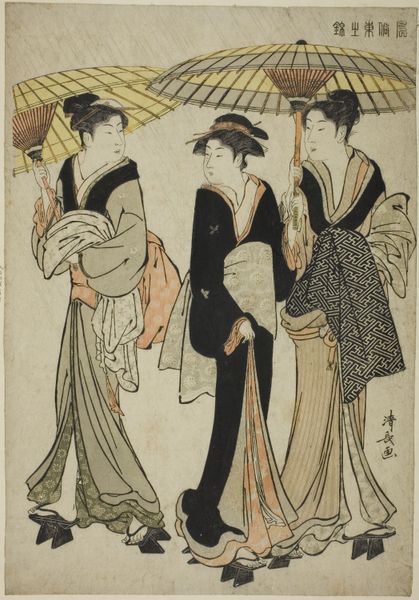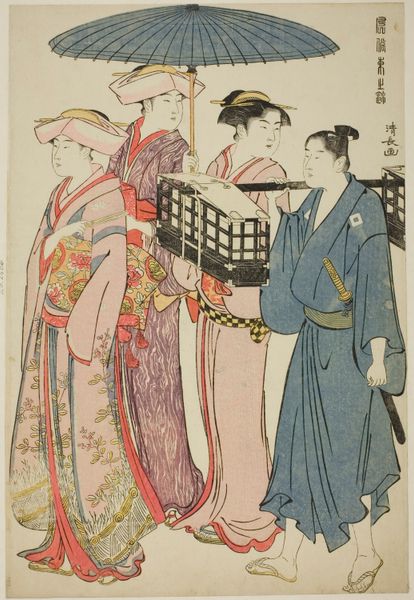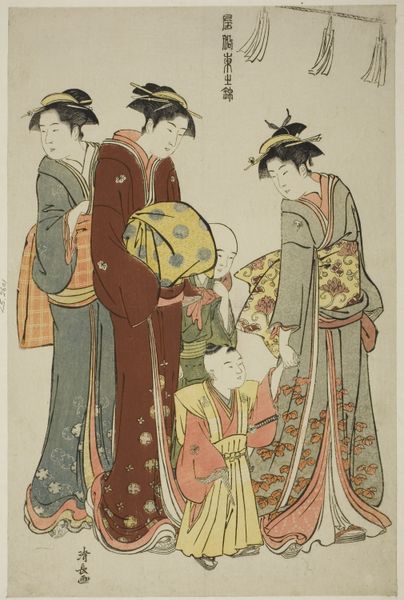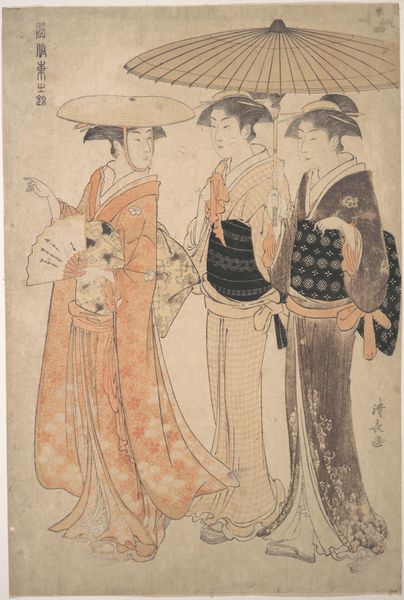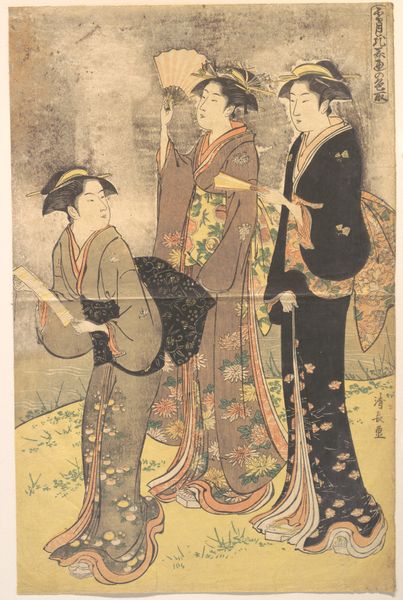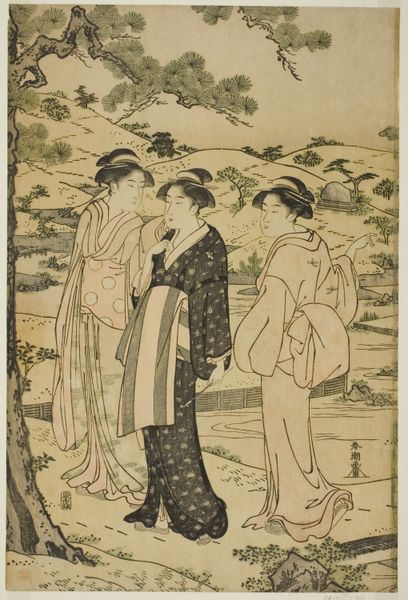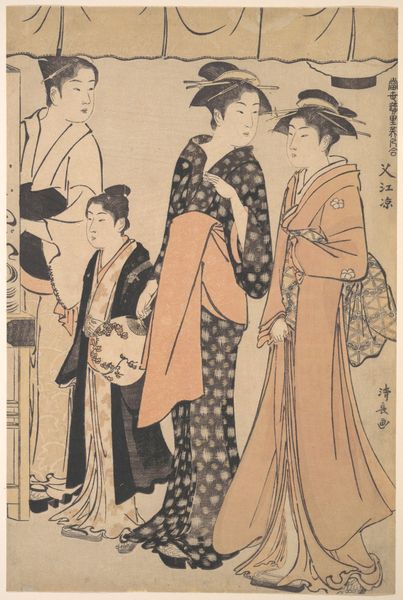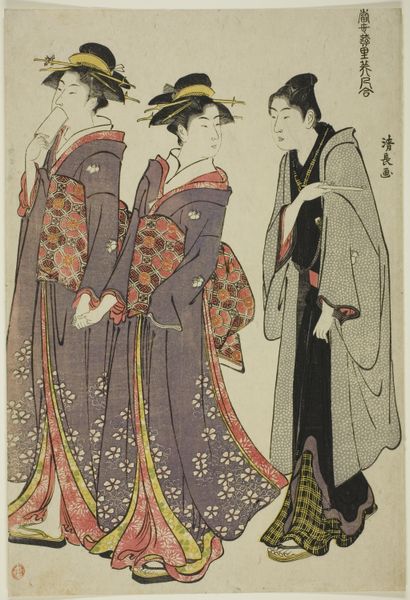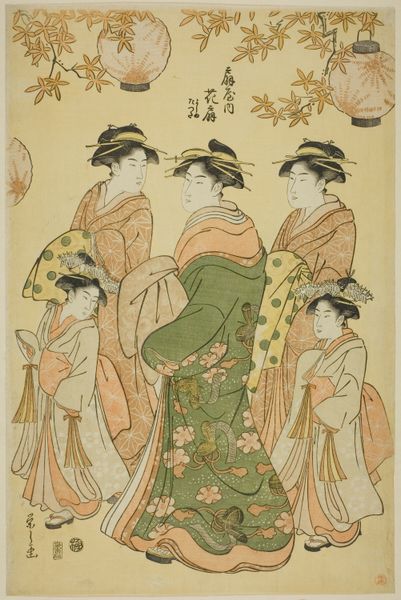
A Lady from a Samurai Household with Three Attendants, from the series A Brocade of Eastern Manners (Fūzoku Azuma no nishiki) 1810 - 1830
0:00
0:00
print, woodblock-print
#
portrait
# print
#
asian-art
#
ukiyo-e
#
figuration
#
woodblock-print
#
genre-painting
Dimensions: 15 1/4 x 10 3/8 in. (38.7 x 26.4 cm)
Copyright: Public Domain
Curator: At the Metropolitan Museum, we find a captivating woodblock print, "A Lady from a Samurai Household with Three Attendants, from the series A Brocade of Eastern Manners" by Torii Kiyonaga, dating from around 1810-1830. Editor: The immediate impression is one of constrained elegance. Their posture and contained gestures hint at a specific type of female labor that seems carefully choreographed. Curator: Kiyonaga's process involved carefully carved woodblocks, each responsible for a distinct color, overlaid to create the final image. The layered printing, requiring a specific artisan skillset, mirrors the layers of societal hierarchy depicted. Editor: Absolutely, and it's important to consider the Edo period context. The rigid social structures placed women, particularly those connected to Samurai households, into positions governed by codes of conduct and expected behaviors. Curator: We see these hierarchies mirrored in the luxuriousness of their clothing and in their posture. The quality of the print would be directly influenced by access to certain materials and technologies only possible within those class positions. Editor: These prints also offer a vital, albeit perhaps idealized, visual record. These portrayals become significant texts for decoding gendered identity, and offer opportunities to interrogate assumptions of femininity and power that might have impacted not only Samurai households but broader society. Curator: Consider the umbrellas, and how its crafted from a specific type of paper and bamboo, or the fans each attendant carries: These material objects function as markers of status, meticulously reproduced through craft labor. Editor: True. Furthermore, these markers simultaneously uphold social order and become contested spaces when considered through performativity; through what they display and simultaneously conceal about class, power, and performance. Curator: Through a careful analysis of materials and modes of production, we reveal insight into how society structured even quotidian moments of consumption. Editor: I agree, the scene invites us to delve deeper into how the artwork reveals so many unspoken realities concerning social stratifications and gender roles. Curator: Precisely. Reflecting on both material creation and broader context allows this print to tell an engaging story. Editor: This experience only enriches one’s perspectives surrounding societal standards, the performance of daily activities, and the intricate relationships that surround these fascinating individuals.
Comments
No comments
Be the first to comment and join the conversation on the ultimate creative platform.
